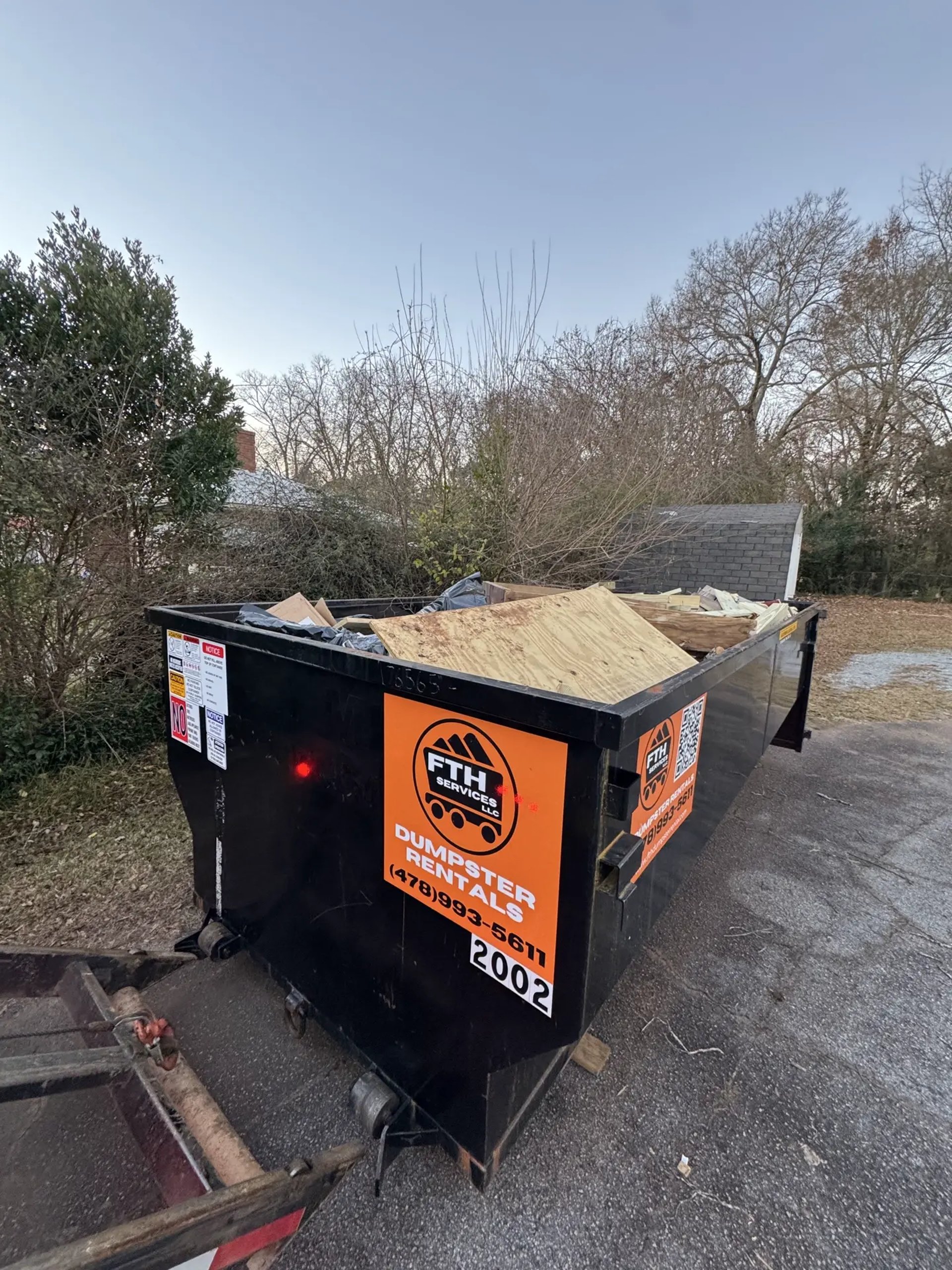Mastering the Art of Loading a Roll-Off Dumpster: Tips and Tricks
Need to know how to efficiently load a dumpster? This 4 minute read will give you vital tips and tricks.
DUMPSTER BLOGS


Understanding Roll-Off Dumpsters
Roll-off dumpsters are large containers specifically designed for the easy disposal of substantial amounts of waste. Typically utilized in construction, renovation, and large cleanout projects, these dumpsters come in various sizes ranging from 10 to 40 cubic yards, accommodating different project requirements. Their name derives from the characteristic method of delivery and pickup; they are rolled off and onto trucks using special equipment, allowing for seamless transport.
A primary advantage of roll-off dumpsters is their capacity to manage large volumes of waste efficiently. Given their robust structure, they can contain heavy materials such as construction debris, household items, and yard waste. Employing a roll-off dumpster streamlines the waste management process, making it significantly easier for projects to maintain a clean and organized work environment. Furthermore, these dumpsters help minimize the risk of accidents on job sites by consolidating waste in a designated area.
Loading a roll-off dumpster properly is critical not only for optimizing space but also for ensuring safety during transport. Mismanaged loading can lead to hazardous situations, including overloading, where the weight exceeded the truck's capacity, and loose debris that might fall during transportation. To avoid such concerns, it is essential to comprehend the weight limitations and dimensions of the chosen dumpster size. Understanding these operational guidelines ensures the effective use of the dumpster while protecting both workers and the surrounding environment.
Moreover, when strategically loading a roll-off dumpster, one can maximize its capacity by distributing weight evenly and placing heavier items at the bottom. This practice enhances stability, making the removal process safer and more efficient. A well-managed loading strategy, combined with the inherent benefits of using a roll-off dumpster, creates the perfect foundation for successful waste disposal.
Preparing to Load: Essential Steps
Successful dumpster loading begins with careful preparation. The first step involves assessing the type and volume of waste you plan to dispose of. Different types of waste, such as construction debris, household items, or yard waste, may have different disposal requirements and weight limits. By understanding what materials you will be loading, you can make informed decisions on the appropriate dumpster size and type for your project.
Once you have identified the materials for disposal, it's essential to verify the weight limits associated with the roll-off dumpster you have selected. Each dumpster comes with specific weight restrictions based on its size and intended use. Loading beyond these limits can lead to additional fees or complications during transportation. To avoid any issues, weigh your materials beforehand, if possible, and prioritize loading lighter items before heavier ones.
Organizing your materials prior to loading is another crucial step in expediting the process. By sorting items by type—such as recyclable materials, hazardous waste, or general trash—you will enhance space utilization and streamline loading. This organization allows you to load the dumpster more efficiently, ultimately maximizing the available space while ensuring that weight is evenly distributed. It also simplifies the disposal process, ensuring that materials requiring special treatment—like electronics or chemicals—are handled appropriately.
Finally, gather the necessary tools and equipment to make the loading process as smooth as possible. Essential tools may include gloves for safety, a dolly or hand truck for transporting heavy items, and tarps or straps to secure loose materials. Proper preparation not only makes the loading experience easier but also enhances safety and ensures compliance with all relevant regulations. By taking these essential steps, you are well on your way to mastering the art of loading a roll-off dumpster effectively.
Loading Techniques: Maximizing Space and Safety
When it comes to efficiently utilizing a roll-off dumpster, adopting the right loading techniques is essential. Maximizing space involves understanding how to load items based on their weight and size to ensure that the dumpster is filled appropriately without compromising safety. First and foremost, it is advisable to begin loading heavy materials at the bottom. This practice provides a stable base and prevents tipping during transport. Materials such as concrete, bricks, or heavy machinery should be placed at the floor of the dumpster.
As you stack additional items, consider their size and weight distribution. Place larger pieces at the base and follow with smaller, lighter items. This hierarchical approach not only optimizes space but also secures the load during transit. Additionally, always load materials in a manner that avoids excessive piling or overfilling. Overloading a dumpster can lead to hazardous situations, such as the risk of spillage and potential fines.
Another crucial aspect of loading a roll-off dumpster safely is ensuring that all materials are secured properly. Loose items, particularly those that can shift or fall during transport, should be bundled or enclosed to prevent them from spilling out on the road. Tarping the dumpster or covering the load with a heavy-duty tarp is an effective method to secure loose debris. Furthermore, using straps or nets can provide additional security for larger items or stacks that may not be stable on their own.
In addition to these loading strategies, maintaining personal safety while loading the dumpster is of utmost importance. Wear appropriate protective gear such as gloves, sturdy footwear, and a hard hat when working with heavy items. Be mindful of lifting techniques; use your legs to lift heavy objects rather than your back to avoid injuries. By implementing these loading techniques, you can maximize the use of your roll-off dumpster while ensuring a safe and compliant disposal process.
Final Steps and Best Practices for Disposal
Once the roll-off dumpster is loaded, it is essential to take several final steps to ensure proper disposal and compliance with local regulations. The first step is to thoroughly review the load in the dumpster. It is crucial to ensure that the waste is evenly distributed and does not exceed the maximum fill line specified by the rental company. This practice helps prevent overloading, which can lead to safety hazards during transport. Additionally, many local regulations dictate specific types of materials that can be disposed of in a dumpster, making it imperative to confirm that all contents comply with these guidelines.
Next, communication with the rental company is vital. Before the scheduled pickup, it is wise to confirm the loading guidelines provided at the time of rental. This can help avoid any potential extra fees or issues related to improper loading. Rental companies often have specific requirements regarding weight limits and prohibited materials, and adhering to these can streamline the disposal process.
After ensuring compliance with regulations and guidelines, scheduling a timely pickup of the roll-off dumpster is critical. Prompt collection not only keeps your workspace tidy but also facilitates efficient waste management. In the meantime, consider implementing best practices for responsible waste disposal. For example, separate recyclables from general waste whenever possible. Items such as cardboard, glass, and metals can often be recycled instead of being sent to a landfill. Additionally, familiarizing oneself with eco-friendly disposal methods can significantly reduce the environmental impact of waste. Many communities offer resources to help residents identify responsible waste disposal options that support sustainability practices.

